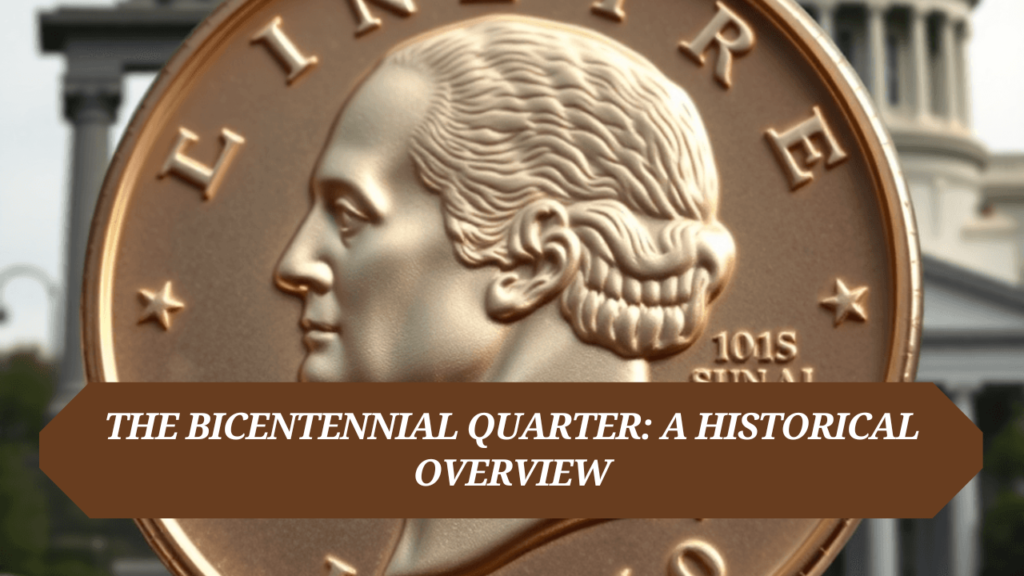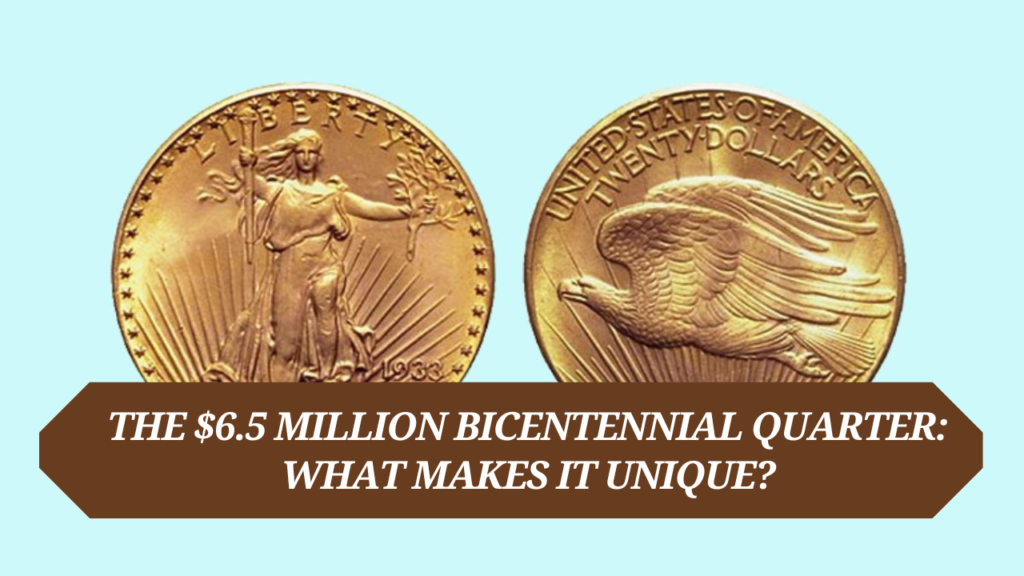Introduction
The rare world of rare coin collecting. One can grade a single Bicentennial Quarter with a price that just floor it at.5 million. It is indeed a great find, and collectors and investors have taken it up once again, instilling new energy into these treasures.
This is the guide, giving you insights into:
- The fantastic narrative of the Bicentennial Quarter development. What makes some quarters special and sets them apart
- The process of professional grading systems in valuing your coin
- A Guide to Building a Valuable Collection: Investment Strategies from Minting Errors to Pristine Preservation
From minting errors to pristine preservation, you will learn the exact characteristics that transformed a 25-cent piece into a multi-million dollar artifact.
Whether seasoned collector or just starting your journey into numismatics, this exploration of America’s most valuable quarters will arm you with essential knowledge for recognizing treasures lurking in your own collection.
The Bicentennial Quarter: A Historical Overview

The Bicentennial Quarter was one of the special edition coins released by the United States Mint in 1975 to commemorate the country’s celebration of 200 years of independence.
In a significant break from the regular design of the Washington Quarter, the Bicentennial Quarter featured the dual-date format, “1776-1976.”
Design and Artist
Artist Jack L. Ahr created the obverse, which used a Colonial drummer to the left rather than an eagle. A torch for victory is behind the drummer, who stands in front of 13 stars in the shape of a circle. This was the first significant design change to the quarter since 1932.
Mintage and Circulation
Mintage information included:
Philadelphia (no mintmark) and Denver (D mintmark) 40% silver collector sets
Copper-nickel clad circulation sets
Production details
The United States Mint manufactured these quarters throughout 1975 and 1976 both of which carry the dual date. Circulation numbers rose to impressive summits:
- 1976-D: 860,118,839
- 1976-P: 809,784,016
- Silver Proof Sets: 4 million
The coins circulated extensively, making them common among casual collectors and serious numismatists alike.
Important Features of Rare Bicentennial Quarters
The Bicentennial Quarters are unique compared to the regular ones. Major minting mistakes from high-value specimens include:
- Double-struck designs
- Off-center strikes
- Missing clad layers
- Die breaks or cracks
Eye appeal is the last judge of a quarter’s value. Collectors constantly seek coins with the following qualities:
- Natural toning
- Sharp strike details
- Minimal contact marks
- Original mint luster
- Even surface preservation
Quarters with these qualities plus minting errors sell at the highest prices in the collector’s market.
The $6.5 Million Bicentennial Quarter: What Makes It Unique?

The legendary $6.5 million Bicentennial Quarter is one of the most prime examples of how extraordinary value minting errors can create.
This quarter boasts a dramatic double-struck error in which the coin was struck twice at 50% off-center position, thus creating a striking overlapping effect on both obverse and reverse sides.
The investment merits come in the form of:
- PCGS perfect MS-70 grade
- Documented provenance that reveals the true origin of the coin, being from the site of its discovery
- It is the only recorded mistake of this style
- It is a Bicentennial issue, hence of historical importance
Other Rare Coins Worth More Than $30 Million You Need to Know
Rarities in the world of rare coins go far beyond the Bicentennial Quarter. Here’s a small glimpse at some extraordinary pieces with numismatic history to tell:
- 1933 Saint-Gaudens Double Eagle – $18.9 million
- Among the most costly coins offered today. Originally ordered demolished by Franklin D. Roosevelt Only one specimen legally allowed in private ownership
- 1794 Flowing Dollar Silver – million shows the first US Mint silver dollar produced. Lady Liberty design with flowing hair
- Exceptional strike quality and condition
- Brasher Doubloon 1787: $7.4 million
- First gold coin produced for the United States
- Designed by Ephraim Brasher, neighbor of George Washington
- It comes with the punch mark signature of the “EB”
- Silver Dollar 1804: $7 million
- Clearly identified as the “King of American Coins,” Just 15 examples are known to remain
- This was struck for exhibition in 1834.
These coins are the apex achievements in American minting history, each with unique stories of preservation, discovery, and historical significance.
Understanding Coin Grading Systems and Their Impact on Values

Professional grading services help dictate what a coin is worth. Two giants stand out: Professional Coin Grading Service (PCGS) and Numismatic Guaranty Corporation (NGC).
The Sheldon Scale Utilized by PCGS
The Sheldon Scale is employed by the PCGS which scores coins from 1 to 70:
- 1-3: Poor to Fair
- 4-12: Good to Fine
- 13-58: Extremely Fine to Almost Uncirculated
- 60-70: Mint State (MS)
- NGC’s Grading System and Further Designations
NGC employs a similar system but has additional designations such as:
- PL (Proof Like)
- DMPL (Deep Mirror Proof Like)
- FBL (Full Bell Lines)
Factors Considered in Coin Grading
Several factors are scrutinized while grading expert appraisers consider:
- Strike quality
- Surface retention
- Luster
- Color
- Eye appeal
One grade can make all the difference in price; a Bicentennial Quarter graded MS-65 might sell for $25, while graded MS-67 the same coin could sell for $1,500 or more.
Conclusion: Exploring the Allure Beyond Monetary Value in Numismatics

Such as this $6.5 million Bicentennial Quarter, rare coins come with stories of a much value beyond their monetary worth. Every piece makes a concrete tie to the American past, through its history, thus to important moments in the progression of our country.
Read More :- Unveiling the Unique Silver Coin Worth More Than $10,000
Coin collecting allows the heritage to be held in our hands, yet it spans generations. These metal relics take the essence of their times – from artistic elements to economic conditions that shaped them.
Want to get started collecting coins? Here’s a primer:
- Join local coin collecting clubs
- Research historical periods that interest you
- Start with affordable historically relevant pieces
- Get connected with experienced collectors for guidance
- Record the growth of your collection and new findings
- Whether for monetary benefits or historical artifacts, numismatics leads you through a valuable journey to discover America’s heritage hidden in its coins.
FAQs:
What is the historical significance of the Bicentennial Quarter?
The Bicentennial Quarter was produced in 1976 to commemorate the 200th anniversary of the United States. These quarters were a one-time novelty design by Jack L. Ahr and issued for circulation by the United States Mint in both 1975 and 1976.
What key characteristics make certain Bicentennial Quarters rare?
Some are extremely rare simply because of defects in the minting process, like particular marks. Also, Bicentennial Quarters, owing to the grading of the coins.
What details contribute to the $6.5 million valuation of a specific Bicentennial Quarter?
Apart from its huge minting error, the quarter has heavily increased the coin’s chances of being rare. Adding to these, the current demand for rare coins.
Why are collectors drawn to rare coins beyond their monetary value?
Of course, rare coins are also purchased for their history and significance beyond their monetary worth. In any case, numismatics is a vital player in keeping American history alive.









